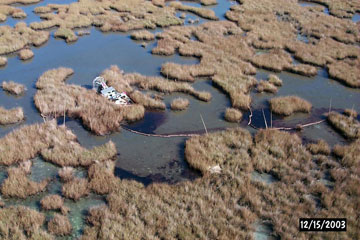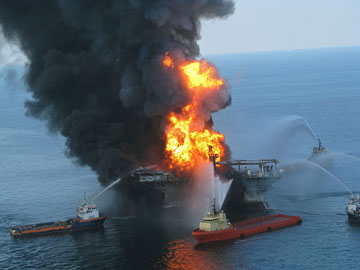“History does not crawl, it jumps.”- Nassim Nicholas Taleb
“This is an opportunity for greatness which has never been offered to any civilization… in human history before – to act as a generation to do the
right thing – and if we fail to receive that opportunity to act on it then my feeling is we will become the most vilified generation that has ever
lived in human history.” – Dr. Roger Payne, Ocean Alliance
The defining events shaping the modern world – economic, social, environmental, progressive and disruptive – are frequently characterized as “Black
Swans.” The Black Swan term and theory were characterized
by author and analyst Nassim Nicholas Taleb who explains, “What we call here a Black Swan (and capitalize it) is an event with the following three
attributes. First, it is an outlier, as it lies outside the realm of regular expectations, because nothing in the past can convincingly point to its
possibility. Second, it carries an extreme impact. Third, in spite of its outlier status, human nature makes us concoct explanations for its occurrence
after the fact, making it explainable and predictable.” Taleb identifies the emergence of the internet, the attacks of September 11, 2001, the
popularity of Facebook, stock market crashes, the success of Harry Potter, and World War I as among Black Swan events.
 |
Circumstances in the environmental realm share many similarities with those historical jumps and Black Swans identified by Taleb. Throughout time, and
especially during the current era, changes in the status of the Earth System are often non-linear in fashion, with unexpected outcomes. A slight shift
in solar radiation may quickly transform a fertile savanna to desert through biological
feedback mechanisms. The loss of a crucial species may suddenly and irrevocably alter an entire ecosystem, as in the classic case of the removal of
predatory sea stars studied by Dr. Robert Paine and colleagues. The introduction of a plant, microbe, or animal may rearrange the biodiversity and
nutrient cycles of large geographic ranges.
Preparation of environmental solutions for the extreme global change events of the 21st Century requires a tough, honest assessment of the
major forces shaping our world. Large-scale floods, droughts, industrial disasters, economic downturn, as well as unforeseen social unification
movements, collaborations, and breakthroughs should no longer be considered unlikely, out-of-the-ordinary events during contemporary times.
Natural Disasters, Industrial Breakdown and Catabolic Collapse
Following the tsunami in March 2011, the Japanese government allowed the release of more than 2.5 million gallons of radioactive waste from the
Fukushima nuclear plant into the Pacific Ocean. This – combined with the massive heap of irradiated waste composed of timber, buildings/infrastructure,
capsized boats, plastic, and other material swept into the ocean by the tsunami – have created a disastrous and difficult marine environmental
contamination scenario. Much of this debris has condensed into a heap of some 70 square miles of nuclear, biological, and chemical (NBC) waste that is
making its way through the Pacific Ocean. Waste is expected to pass near Hawaii in 2012 and arrive at the West Coast of the United States in 2013.
Researchers estimate that 5 -10% of the total waste will wash up on shores, the rest joining the ever-growing Pacific Garbage Patch.
 Anti-Nuclear Power Plant Rally on 19 September 2011 at Meiji Shrine Outer Garden. Photo by: 保守. |
As with the majority of industrial disasters, legitimate information of the extent of damage and danger is not easy to determine. Following the
International Atomic Energy Agency’s (IAEA) claims that the radioactive waste would dissipate in the middle of the Pacific, environmental consultant
and writer Yoichi Shimatsu challenged their statements, forcing the IAEA to backtrack and admit
Cesium-137 might reach the shores of several countries in months to years.
Shimatsu claims the marine food chain is already being bombarded by radioactive isotopes of cesium and strontium, that ocean creatures have been
exposed to “millions of tons of biological waste from pig farms and untreated sludge from tsunami-engulfed coast of Japan,” and that leached chemicals
from plastics, paints and debris will have immediate, harmful effects on human health as well as marine organisms.
The Environmental Protection Agency (EPA) has already reported finding several radioactive isotopes in milk samples from Hilo, Hawaii, though the
agency claimed the levels were “not dangerous.”
Nuclear expert and energy advisor
Arnie Gundersen suggests
the recommendations of governmental agencies should be ignored in favor of more careful measures, stating: “In Japan we are saying avoid fish caught in
the Pacific, unless you know they are caught a long way away from Fukushima. I am saying 100 miles off Fukushima, don’t even consider it. I think that
will actually get worse with time.” Gundersen expresses concern that the Food and Drug Administration (FDA) is not monitoring radiation levels in the
fish entering the country, claiming, “sooner or later a tuna is going to set off a radiation alarm …and people are going to think it’s a dirty bomb or
something like that. So that’s not here yet because the tuna haven’t migrated across the Pacific. But I am thinking by 2013 we might see contamination
of the water and of the top of the food chain fishes on the West Coast.”
Governments, NGOs, and society in general are ill prepared to cope with disasters of the magnitude of the Fukushima incident and the persistent NBC
waste accompanying the aftermath. Prevention, preparation, and adaptation strategies to these sorts of occurrences must become integrated into
mainstream culture as a whole.
Facets of human and group psychology predispose most of society to dismiss the threat of outlier situations such as the Fukushima meltdown and the
ensuing contamination of the Pacific. Most of the developed world has been convinced these are low-probability scenarios. 21st Century
threat multipliers force a stern re-evaluation of these presumptions. In the case of the fossil fuels, the normal functioning of the entire industry is
an ongoing disaster, and the instances of large spills such as BP’s Gulf incident are merely slightly larger blots against a pockmarked canvas of
ecological destruction.
 Oil spill responders trying to recover oil from a marsh during the Mendicant Island incident. Photo by: NOAA. |
The National Wildlife Foundation’s (NWF) 2010 ”
Assault on America
: a Decade of Petroleum Company Disaster, Pollution, and Profit” report exposes the frequency and severity of oil spills in North America. The NWF
asserts, “Incidents occur on a monthly and, sometimes, daily basis across the country but sadly only a portion of these make the front page or evening
news.” The report discloses that during the period spanning 2001 to 2007 there were 1,443 offshore-drilling accidents in the Outer Continental Shelf,
including 41 fatalities, 476 fires, and 356 “pollution events.” There have been 2,554 “significant” pipeline accidents onshore between 2000 and 2009,
with at least 161 fatalities.
In the 1990’s the EPA found that some 25% of the 800,000 underground tanks across the United States were leaking. More stringent laws and regulations
passed between the years 2000 and 2010 have not slowed the seepage of gasoline and diesel.
Despite worldwide economic downturn, the largest 10 petroleum refining companies globally reported over $150 billion in profits for the year 2009, $38
million of which was spent lobbying members of the US Congress. The industry’s inabilities to maintain its infrastructure and account for its mistakes
are a reflection their inherent profit-seeking motivation.
Globally, the fossil fuel industry’s habits of ecological destruction are similar. An ExxonMobil spill in the Niger Delta begun in May of 2010 released
around 96,000 tonnes (with 1 tonne equal to about 308 gallons) of crude. The Xingang Port oil spill in China during July 2010 spilled a similar amount
into the Yellow Sea. Brazil, Canada, India, China, Italy, France and others have all reported substantially large oil spills during the year 2011.
Nigeria – a major producer of light crude – has suffered two recent and devastating petroleum-related disasters. At least 20,000 barrels was released
off the coast of Nigeria late in 2011 in Shell’s worst spill in the region since 1998. Not much later in January of 2012, a Chevron facility off the
Nigerian coast exploded likely killing 2 foreign workers.
The infrastructure, equipment, and safety standards in the petroleum industry require a substantial overhaul. Despite record profits, little is being
invested to maintain aging equipment and prevent future spill. Many of the spills and leaks are located in crucial regions for biodiversity and
wilderness.
Following a 5,000 barrel spill in 2006, BP was forced to shut down corroded pipelines in Alaska’s North Slope. Alaska Project for the
Natural Resources Defense Council’s director Charles Clusen
was less than shocked, explaining, “These companies have not been putting the money into infrastructure up there.” Petroleum analysts with Oppenheimer
and Co. verified this assertion and generalized it to the oil industry, claiming they have mostly neglected proper upkeep and safety procedures. The
results of this negligence are reflected in the growing anti-fossil fuel movement.
Social pressure and environmental concern is rapidly building against further expansion of fossil fuel projects. Late in 2011, about 10,000 protestors
met in Washington, D.C. to express their disapproval of the controversial Keystone XL Pipeline, creating an almost 2 mile long human chain around the
White House. A decision on the pipeline was postponed, signaling a temporary victory for the environmental movement. The Keystone XL project would
transport some 900,000 barrels of tar sands oil a day across the United States from Alberta, Canada, to be refined in the Gulf Coast.
In the cases of NBC waste from the Fukushima event as well as pollution from continuous oil spills, the industries responsible do not provide adequate
remediation of their environmental damage.
 Platform supply vessels battle the blazing remnants of the off shore oil rig Deepwater Horizon. A Coast Guard MH-65C dolphin rescue helicopter and crew document the fire aboard the mobile offshore drilling unit Deepwater Horizon, while searching for survivors. Multiple Coast Guard helicopters, planes and cutters responded to rescue the Deepwater Horizon’s 126 person crew. Photos by U.S. Coast Guard. |
We appear to be well on our way to becoming the “most vilified generation that has ever lived” to which Dr. Payne alludes. The generational gap in this
instance, however, is one of perception rather than age. The large-scale incidents such as the Fukushima meltdown and the BP Gulf spill are Black Swans
from the perspective of adherents to the industrial model; to economies of ceaseless growth, excessive consumption and expansion.
The rising large-scale disasters and stumbling global economy increasingly indicate the symptoms of self-reinforcing or catabolic collapse. Instead of
persisting in the wishful fantasies that somehow centralized government and competitive markets will miraculously reform and adapt to the circumstances
of the modern age, environmental and ecological groups must take on the responsibility of preparing solutions for the post-industrial world.
The catabolic collapse of industrial society is not contingent on extreme disasters and global devastation. The first stages in the collapse of
civilizations are frequently results of the inabilities of centralized governments and states to provide necessary services to their internal
populations. When states fail or “hollow out” a variety of decentralized approaches to social welfare become adaptive and common.
Author John Michael Greer elaborates on the difficulty of maintain increasing social complexity, explaining, “…civilizations are complex, expensive,
fragile things. To keep one going, you have to maintain and replace a whole series of capital stocks: physical (such as buildings), human (such as
trained workers), information (such as agricultural knowledge), social (such as market systems), and more. If you can do this within the ‘monthly
budget’ of resources provided by the natural world and the efforts of your labor force, your civilization can last a very long time. Over time, though,
civilizations tend to build their capital stocks up to levels that can’t be maintained; each king (or industrial magnate) wants to build a bigger
palace (or skyscraper) than the one before him, and so on. That puts a civilization into the same bind as the homeowner with the oversized house.” Just
as the real estate bubble of 2008 took most by surprise, the difficulty to predict and accept the decline of industrial civilization comes too late for
many.
The collapse of vast, complex societies typically does not occur within a short time span or a due to a single event. The generational realization
accompanying the enduring failures of present economic, developmental, and industrial schemes may contribute to leaps in cultural change capable of
radically reshaping global society and avoiding the difficulties required to maintain a complex, intensifying global civilization.
The ocean, for instance, need not rise several meters as predicted to occur within the century to cause widespread disruption of coastal real-estate
markets. The growing realization that the effects of climate change are already locked into the system, rendering coastal properties across the world
worthless investments will significantly upset the real estate economy well in advance of the rising seas. The same is true for areas that will be
progressively rendered disturbed or uninhabitable by floods, droughts, over-harvesting, and extreme contamination. The cultural acceptance of the
effects of climate change will deter a generation of potential investors, and render property values of many existing owners a fraction of their
previous worth. This will not be regionally or temporally confined, as the obvious effects of climate change are distributed everywhere.
 Above – Kilimanjaro in 1993, below the peak in 2000. The snow/ice of Mount Kilimanjaro persisted for some 12,000 years. The mountain is expected to be snow/ice free in about a decade. Photos by NASA. |
Spills and contamination events have similar effects to climate change in terms of abandonment of large regions of land. In the case of Fukushima, 20
km surrounding the original site of the meltdown have been deemed “uninhabitable” by the Japanese government for at least 20 years. A much larger
surrounding area will be considered undesirable and dangerous for several decades.
Towards a Framework for Post-Industrial Resiliency and Restoration
“Pure knowledge is the ultimate emancipator. It equalizes people and sovereign states, erodes the archaic barriers of superstition and promises to lift
the trajectory of cultural evolution.” – E.O. Wilson
“The recent spread of Peak Oil resolutions and projects by cities and towns across America is thus a very hopeful sign. It’s going to take drastic
changes and a great deal of economic rebuilding before these communities can get by on the more limited resources of a deindustrial future, but the
crucial first steps toward sustainability are at least on the table now. If our future is to be anything but a desperate attempt to keep our balance as
we skid down the slope of collapse and decline, these projects may well point the way.” – John Michael Greer
The preliminary steps towards a cultural conversion from the traditional, dominate economic and governmental practices are underway. A growing,
organizing and increasingly active environmental movement has become capable of harnessing the power to deter large, well-funded projects such as the
Keystone XL pipeline, as well as influence the energy agendas of entire nations. Massive protests following the Fukushima meltdown pushed
Germany and Switzerland
to phase out nuclear power. Germany closed eight of its nuclear reactors immediately after the Fukushima incident in March.
The seemingly overwhelming catalog of ecological crises presents the opportunity for the expansion of a wide variety of novel solutions and approaches
where traditional methods have floundered. Instead of depending on the power and financial support of states, the success of these sorts of solutions
are contingent on mass participation and networking as well as an unrelenting cultural shift from consumerist, materialist lifestyles towards
participatory, exploratory, and restorative cultures.
The Black Swans of the modern age are by no means solely negative, catastrophic disturbances. Social movements and conservation measures often yield
unexpected and positive results.
Following more than a decade of attempted conservation measures, mollusk expert Bill Ballantine was able to halt over-fishing in a two square mile
marine area in Goat Island, New Zealand. Populations of lobster, rock oysters, snappers, kelp, and other species had plummeted due to mismanaged
fishing practices. Ballantine eventually convinced enough local fishermen to create a protective reserve. The speed of recovery in the area stunned
marine wildlife scientists and brought Goat Island into the international limelight, eventually attracting hundreds of thousands of tourists per year.
The conventional wisdom of local fishermen was upset; Ballantine’s previously radical approach quickly proved a blessing in the economic realm as well
as long-term conservation.
Ballantine’s approach and success illustrate the unyielding dedication and persistence necessary to introduce viable conservation schemes. In many
instances, the mindset of extractive capitalism is so profoundly entrenched into culture that alternatives must by proven by example. Education,
outreach, and restorative conservation programs are necessary to prevent governments from resorting to eco-fascism – the tightly regulated imposition
of environmental protection regulations. In the wake of failed governance and business models, grassroots and self-organizing solutions offer
impressive alternatives.
Since its onset in 2005, the Transition Movement has rapidly expanded from
the UK throughout communities around the world. Transition Towns/Networks generally consist of grassroots efforts towards radical re-localization and
preparation for the pressures of energy decline and climate change. In less than a decade over 1,800 Transition programs across the globe have arisen.
Transition movements incorporate a variety of techniques and knowledge including reskilling, education, restoration of derelict land, home and
community food gardens, renewable energy, and permaculture. Transition networks offer training and organizational courses and resources, with the hopes
of expanding techniques and education for the future of energy decline and environmental chaos. Transition Towns are part of a broader wave of
“resilient community/intentional community” movements aimed at self-organized adaptation to the issues large governments and industries have ignored.
In many circumstances the information sharing potential of the internet provides resources more readily, affordably, and efficiently than traditional,
institutionalized educational programs. Bottom-up movements such as resilient communities and guerrilla gardening thrive by means of cooperation, self-organization and the free sharing of
knowledge, as opposed to the relatively slower, more brittle rigors of academic, corporate and industrial institutions. As participation in these
movements builds, even advanced, highly technical skills previously confined to specialized experts spread rapidly. The future of adaptation and
societal progress through the coming period of energy decline and global disruption will depend heavily on the abilities of these movements.
Related articles